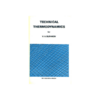Mi Cuenta
Contáctenos
Horario de atención: De Lunes a viernes de 10.00 a.m. a 5.00 p.m.
Sábados: De 10:00 a.m. a 2:00 p.m.
- Jr. Ica 441 Int. 101 Cercado de Lima, Perú
- Teléfono: (511) 428 - 0448 +51 9 92 890 471
- E-mail: ventas@librosmir.com
Alta calidadCon títulos novedosos
AsistenciaAtendemos pedidos a todos los países
DeliveryEnvío a todo el mundo
SeguimientoMonitorice su pedido
Compra seguraPague en el exterior con Paypal
© 2005 - 2024 Librería Científica. Desarrollado por eCreative


